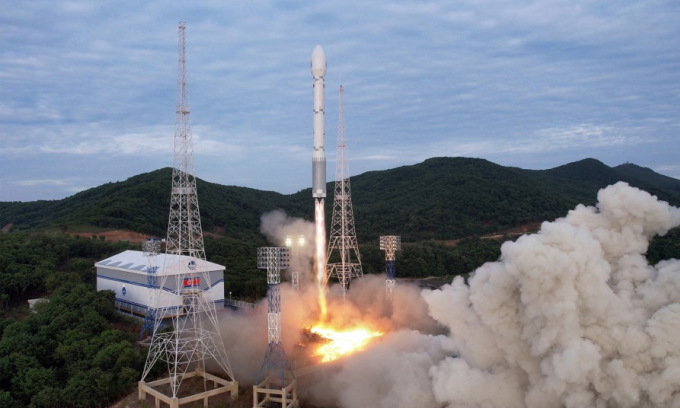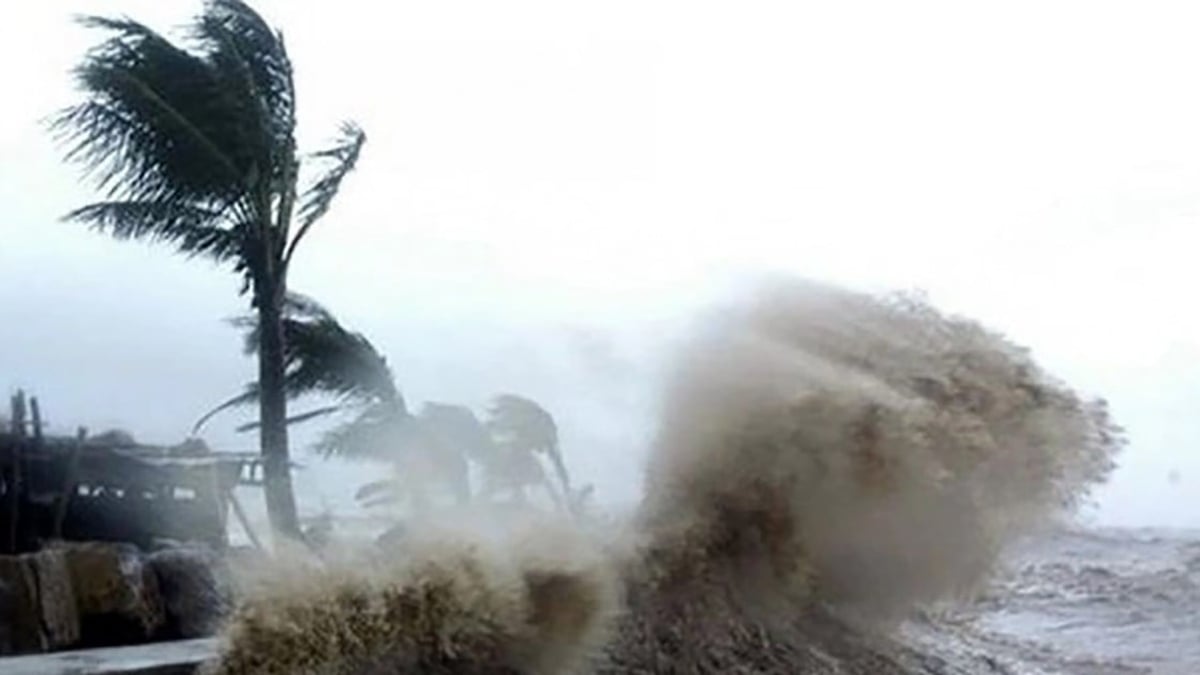North Korea appeared to install a new engine on the second stage of its Chollima-1 rocket, but it suffered a problem that caused the system to fall into the sea.
North Korea's state news agency KCNA said on May 31 that the Cheollima-1 rocket carrying the country's first military reconnaissance satellite fell into the sea due to "loss of power due to abnormal start-up of the second stage engine after the first stage separated."
Pyongyang said it would thoroughly investigate the "serious defects" found during the launch, take corrective measures and conduct a second launch as soon as possible. North Korean officials have not yet revealed the exact cause of the incident, but some Western experts believe the situation stemmed from a new generation of engines equipped for the second stage.

North Korean missile parts were salvaged by the South Korean military on June 1. Photo: Reuters
"I think it's likely that North Korea has developed a restartable second-stage engine based on the Soviet-developed liquid-fueled RD-861," said Jeffrey Lewis, a senior fellow at the James Martin Center for Nonproliferation Studies in the US.
Mr. Lewis mentioned the image of the rocket part that South Korea salvaged at sea, saying it was part of the second stage and was still full of fuel because it had not been used for long before falling.
Liquid-fuel rocket engines have the ability to shut down and restart, as well as adjust thrust in flight, which is not possible with solid-fuel engines.
However, this advantage poses many technological challenges, including how to activate the engine and ensure that the fuel does not move chaotically, leading to loss of supply to the engine in a zero-gravity environment after the first booster stage separates.
Experts say this situation does not occur in the first stage, because it uses the same engine model as the intercontinental ballistic missile (ICBM) that North Korea has successfully launched many times before.
"It appears that the Chollima-1's first stage is powered by a liquid-fuel engine developed from the Soviet-era RD-250, with two exhaust nozzles similar to the Hwasong-15 ICBM," said Joseph Dempsey, an analyst at the US-based International Institute for Strategic Studies (IISS).
This configuration is different from the previous Unha rocket line, which was equipped with four Nodong engines developed from the engine platform of the Scud tactical ballistic missile.

The Chollima-1 rocket carrying North Korea's spy satellite lifted off from the launch pad on May 31. Photo: KCNA
The US and its allies believe that North Korea's satellite launches are "cover" for ballistic missile tests, as they use similar technology. North Korea has launched two satellite-carrying rockets in 2012 and 2016, both over Okinawa prefecture in southern Japan.
However, Ankit Panda, an expert at the Carnegie Endowment for International Peace in the US, said that North Korea has successfully developed a complete ICBM program and does not need to use satellite launches as a cover for ballistic missile tests. He said that Chollima-1 is a medium-sized rocket, designed to put small satellites into low-Earth orbit.
"Its cargo bay is relatively larger than previous models of rockets. I believe that Chollima-1 is capable of transporting satellites with a total mass of 200-300 kg. North Korea has previously aimed to put multiple satellites into orbit with a single rocket, suggesting that they may launch a much larger launch vehicle in the future," he said.
Vu Anh (According to Reuters )
Source link









![[Video] More than 100 universities announce tuition fees for the 2025–2026 academic year](https://vphoto.vietnam.vn/thumb/1200x675/vietnam/resource/IMAGE/2025/7/18/7eacdc721552429494cf919b3a65b42e)




















































































![[Infographic] In 2025, 47 products will achieve national OCOP](https://vphoto.vietnam.vn/thumb/402x226/vietnam/resource/IMAGE/2025/7/16/5d672398b0744db3ab920e05db8e5b7d)





Comment (0)